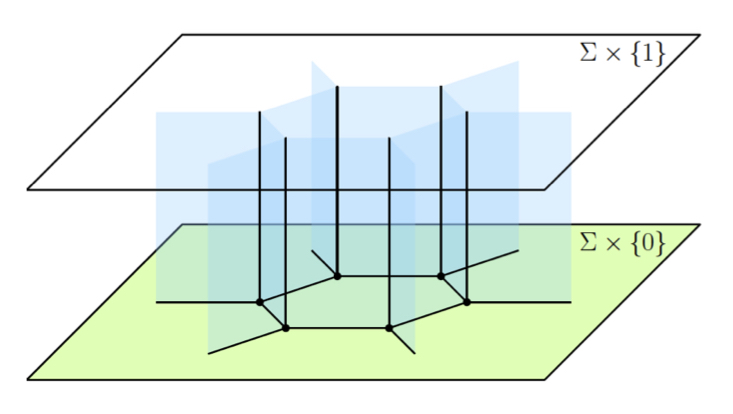Research Area Quantum Theories
Quantum theories are a cornerstone of modern physics and successfully describe the physical world at (sub-) atomic scales. Key aspects can only be addressed and answered within the realm of quantum theories. However, despite their universal success, quantum theories are fundamentally incompatible with General Relativity, Einsteins theory of the gravitational interaction, which successfully governs the universe at large scales. The development of a quantum theory of gravity is a necessity to gain a complete understanding of the physical world covering ultra-short distances (as for example near the center of a black hole) and near the Big Bang, the beginning of the universe.
Quantum theories also transcend the boundaries of physics and influence domains like mathematics, chemistry, biology, and recently also computer science. For centuries the exchange with mathematics has been particularly fruitful and reached a special intensity in the early days of quantum theories or with the advent of string theory as a promising candidate of a quantum gravity. The mutual inspiration has led to many significant advances on both sides and can be viewed as one of the most successful interdisciplinary scientific collaborations in history. Hamburg has been for more than 35 years an internationally renowned and lively center for such collaborative research projects and, at the same time, for the education of “bilingual” scientists at the interface of physics and mathematics.
Interdisciplinary projects are also the hallmark of the research area Quantum Theories and led to significant advances, both in physics and in mathematics. Concretely the cluster focuses on the following three directions:
- String theory and its interface with particle physics and cosmology
String theory contains quantum field theories and general relativity as particular limits. Using this fact it is important to establish the connection with particle physics and cosmology as precisely as possible. This includes addressing the origin and properties of dark matter, the role of supersymmetry, the nature of inflation, the observed accelerated expansion of the universe, and properties of the Standard Model of Particle Physics and its possible extensions. These challenges require novel mathematical tools which are similarly developed in the cluster.
- Non-perturbative properties of quantum field theories
All of particle physics is based on quantum field theories for which we have ample perturbative information. However, their non-perturbative properties are more difficult to access – yet similarly important and at the same time a rich source of mathematical insights. With the help of dualities, where the strong coupling limit of a given QFT is mapped to a (perturbative) dual partner theory, valuable new insight is gained. Particularly rich, both from the point of physics and mathematics, are exactly solvable lower dimensional theories where properties and methods can be further developed with the goal of applications in four-dimensional QFTs.
- Properties of quantum gravities
On very general grounds quantum gravities can be studied and constrained. Here the use of holographically dual quantum field theories and the study of the quantum properties of black holes are particularly promising. A related aspect focuses on the study of certain asymptotic (low energy) limits. In both cases surprisingly many concrete properties of the quantum gravity itself can be extracted and tested in concrete models, leading to non-trivial mathematical predictions.
People Involved
Area Coordinator: Christoph Schweigert
Principal Investigators: Gleb Arutyunov, Tobias Dyckerhoff, Melanie Graf, Christophe Grojean, Julian Holstein, Jan Louis, Elli Pomoni, Andreas Ringwald, Ingo Runkel, Volker Schomerus, Christoph Schweigert, Géraldine Servant, Jörg Teschner, Timo Weigand, Paul Wedrich, Alexander Westphal
Key Researchers: Till Bargheer, Shubham Dwivedi, Craig Lawrie, Sven-Olaf Moch, Sven Möller, David Reutter, Birgit Richter


